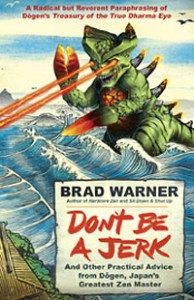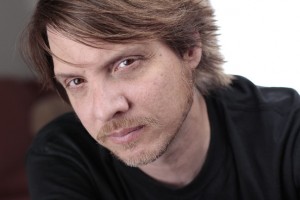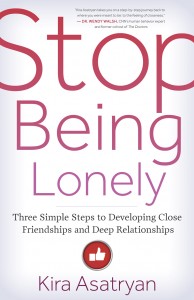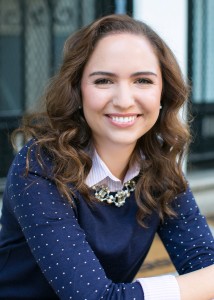By Nicole Azzopardi, author of The Alchemy Cookbook
We tried everything to help our little girl who seemed to be in pain and distress from birth.
Complications at her birth led to an emergency caesarean for which I am very grateful for and most probably saved both of our lives.
However, within days of being discharged from hospital my caesarean wound had become seriously infected and I was given five days of IV antibiotics, followed by two weeks of oral antibiotics.
I noticed after that first breastfeed that my little one had somehow been affected by the antibiotics in my milk, despite being reassured by doctors that treatment would not affect the milk. She screamed and screamed, seemed very colicky and had great difficulty sleeping and settling.
At just three weeks old our daughter had a herniated navel from screaming. She was clearly in agony. I told everyone in the health profession I could, but no one could help us. I was told this was very common behaviour of an infant.
So alone, we struggled on, severely sleep deprived, our baby projectile vomited, her poos were loose and green, she barely slept, had severe colic, her eyes seemed so wide. None of the parenting tricks and tips that were kindly shared with us seemed to work.
At six months we started solid foods as per government guidelines. The usual weaning food of ground white rice made our little girl so constipated that she screamed the house down. A litany of unsuitable nutritional advice followed and I took it all on. Desperate and frightened and sleep deprived.
We spent months on paediatric waiting lists. We went through three paediatricians with limited relief and every alternative healing modality imaginable.
At 11 months old our daughter was diagnosed anaphylactic to egg, nut and sesame. Thankfully, this finally gave us, and the medical world, some clues and direction about the appropriate course of action.
Yay! Finally people were realising that I wasn’t crazy! Our baby needed help as I had been telling them all along. Avoiding these foods in my breast milk helped our daughter instantly and enormously.
However, while we followed a traditional Mediterranean wholefood diet, we also became aware that Stevie was highly sensitive to the naturally occurring chemicals in fresh foods. The salycilates, amines, glutamates found in fruits and vegetables were all identified as affecting her ability to sleep and her mood.
By the time Stevie was 14 months old she had become oppositional, aggressive – would be awake for hours in the night. The so-called night terrors escalated. We gave paracetamol and ibuprofen almost every night thinking she had to be in pain.
We had no idea how to help our little girl.
Recognising a gut in distress
A few months later our daughter’s tantrums had become longer and more frequent.
Putting my journalist’s hat on, I discussed research with one of the authors of the Royal Prince Alfred Hospital diet and were able to implement their recommendations of a short-term elimination diet to identify Stevie’s ability to digest amines, glutamates – food chemicals.
Working with our dietician, we again saw a dramatic change in behaviour. We knew limiting certain foods were related to her seeming much better. We were managing, she was coping better but we had not yet learned how to help our daughter heal.
At 14 months old, Stevie was weaned. I was six months pregnant with her sister Josephine and I just couldn’t do it anymore. The third paediatrician we saw recommended Stevie be put on Elecare. I tried to give it to her but she was repelled by the taste. Looking back, I am so grateful we never went down this path.
However despite ours and the medical world’s best efforts, our little girl deteriorated in the most frightening way.
Still around the age of 14 months old, she began to display autistic-like traits and would lie rigid on the floor screaming and kicking her legs, pulling at her lips, no eye contact, could not speak to us. Food items had to be placed on separate plates of specific colour. She incessantly watched one television program.
She began to say, “Don’t look at me. Don’t touch me.” She would zone out for a minute or two at a time unreachable to me in that time which I now understand could have been mini seizures.
She could not stand the feeling of clothes on her skin. There was only one dress she could wear. We didn’t go anywhere as she couldn’t stand the feeling of the seat belt on her skin. We stopped visiting people and people stopped visiting us.
Despite my mother having chemotherapy and radiation treatment for cancer where she lived an hour and a half away, we barely visited her as I knew Stevie was too distressed by the travel.
Loud noises terrified her. Use of the stick mixer or our food processor caused her to run to her bedroom, holding her ears and shutting the door.
She smashed her little head on the ground. At one point I remember her doing it on a concrete footpath without even seeming to feel it. I felt sick to my stomach watching it. I felt totally helpless.
The night screaming would happen three or four times a night for about 40 minutes at a time. Meltdowns happened many times in the day and she was very fixed on things. I learned the difference between a two-year old tantrum and this kind of meltdown. The length and the frequency of this behaviour throughout the day made me wonder and worry increasingly about our daughter’s neurological development.
At its peak, my partner James had to leave his job. He worked some overnight shifts. We had our little Josephine being woken up through the night by Stevie’s screaming as well.
Quite truthfully, I dreaded the days. I was frightened at night. I can honestly say it was truly the most horrible experience I have ever known in my life.
The difference between food allergy and food intolerance
In addition, Stevie seemed to be hungry all the time and could never get enough food. People external to us immediately assumed she was going through a growth spurt but this behaviour became extreme.
As recommended by our dietitian, I would feed her a variety of whole foods, meat, veg, fruits, seed-like grains, legumes soaked and sprouted – all freshly made from scratch – but she would eat to bursting point. Despite our best efforts, her stomach still looked malnourished, she was thin and eyes dark. She would open her bowels every four days or so and I noticed her behaviour would improve after every bowel movement. Stools were formed then followed by loose impacted stool.
Meanwhile, I was cooking round the clock but nothing seemed to be helping her. I could see clearly that the gut and brain were definitely connected in this problem and luckily physiological symptoms were always good markers of gut distress, rather than just two-year-old behaviour.
For example, if I gave Stevie foods like broccoli, avocado and miso soup, I watched as hives spread across her mouth and down her back. I watched her behaviour also deteriorate and she became oppositional and aggressive soon after eating these foods, which I later learned is a common symptom of food intolerance to the amines in the food rather than food allergy.
At first however, I panicked, wondering if anaphylactic shock was about to play out as this is one of the early signs.
I searched around for traces of egg or nuts and sesame that she had been diagnosed as being allergic to, I re-wiped her high chair and washed my own hands and was dumbfounded as I knew I had got rid of all these foods from our house for the time being.
As you can imagine, it was a totally unsustainable situation, if I wasn’t watching for the allergens that could kill our daughter in a matter of minutes, I was trying to support her through what seemed like wave after wave of anxiety attacks. Like many parents reading this book, I felt beaten and broken into a million pieces.
In the end we had nothing to lose and despite her being seriously allergic to eggs and nuts we tried the Gut and Psychology Syndrome Diet (GAPS) created by neurologist and nutritionist Dr Natasha Campbell McBride.
This wonderful doctor was forced to turn to food as medicine after her own son developed autism. She found the healing protocol she put in place for him transformed her non-verbal little boy into a walking, talking, very healthy child.
He is now a fully grown, university educated, healthy man. Inspired by her story, we leaped into GAPS.
The principles made sense. It was purely and simply a food as medicine regime and I felt that at the very least, it could do no harm.
At the age of two, Easter 2013, Stevie went on the protocol’s introduction diet and took small amounts of probiotic powder and gelatine. Every single step was tiny, painstaking in fact, but she began to improve.
Then she really began to improve.
We implemented the introduction diet as well as we could with the restriction of egg, nut and sesame.
As the diet recommended we cut out all grains and starches. We began with soups and stews using vegetables and meats that Stevie could tolerate. Pumpkin soups cooked with chicken stock, rich in essential minerals and sleep inducing glycine was a staple. The gelatine derived from these stocks were said to soothe an inflamed gut wall and plug holes created by leaky gut syndrome.
Marrow by the teaspoon, again rich in essential fats and minerals was fed to her and tiny amounts of chicken liver pate, high in Vitamin B and importantly B12 were also part of the food as medicine healing process.
We later learned through genetic testing that Stevie’s Vitamin D and B genes were not functioning. Her methylation and detox pathways were extremely compromised. This could be a major contributor to why she was suffering from autistic symptoms. Autistic children share similar DNA I was told. In addition, around 80 per cent of autistic children suffer from either constipation and/or diarrhea.
In a matter of days and weeks, the hives around her mouth stopped, sleep improved. We added digestive enzymes and a synthetic probiotic very slowly – the head of a pin a day in fact – and we watched her bowels and in turn her mood improve.
We used Japanese acupressure, applied castor oil packs and gave small amounts of digestive enzymes. We gave a teaspoon of fresh pressed carrot juice first thing in the morning to help stimulate bile.
Very quickly we were able to introduce tiny amounts of foods like broccoli and avocado, building up day by day. We introduced a whole host of fats starting with ghee, then butter, olive oil and eventually macadamia nut oil.
We gave grass fed meats, fermented vegetables, cultured dairy such as kefir using goat milk, 24-hour cow’s milk yoghurt and a range of seasonal fruits – each one responsible for restoring our daughter back to excellent health.
I started the support group www.mummacare.com around this time to offer some recipes to people also going through similar restrictions. All those posts eventually became what is now The Alchemy Cookbook – Transforming Food into Medicine.
At Easter 2015, we completed the two-year recommended GAPS gut/brain healing protocol and we have a very different little girl I am overjoyed to tell you.
Stevie no longer needs her epipens for a start.
Very quickly, with every visit to our paediatric allergist, tests revealed that Stevie’s allergies were leaving her.
At the time of writing, Stevie’s only known allergen is peanut, which was first registered around 10mm at 11 months old and was just 2mm one year ago.
Stevie falls into the category of the 20 per cent of people who drop their peanut allergy in their lifetime.
Scientists at the Murdoch Research Institute have only recently reported their findings from a trial that introducing probiotic to children with peanut allergy is implicated heavily in 80 per cent of the children being able to eat the food after only a matter of months.
As you can and will see, the science is catching up and there is so much potential and hope for the kind of radical and practical healing story we have personally experienced and been astonished by.
By implementing very simple changes, in some people – I stress not all – I have learned that when you heal the gut, you allow the immune system to not have to work so hard. If the immune system is not working over time it is not at risk of going haywire – sending out messages to attack the body and the brain when every day foods are introduced.
In addition, I am pleased and infinitely relieved to tell you Stevie and the rest of our family now sleep very well at night. She still wakes once or twice but with no screaming or upset. Her appetite has normalised and she loves her meals. Her bowels are very regular and healthy and her weight is bang on target. She loves cream and butter and avocado.
In the past, she could not handle even a little bit of broccoli or avocado. These days, she has enormous amounts.
She is calm and happy in the day and we as a family can relax and enjoy her. She loves kindergarten and to the outside world, looking at this child today, any of the above story would seem hard to believe.
I can assure you readers that what I am describing is a true and balanced account from a mother of sound mind and accurate perception.
Thankfully, I just happen to have the nature of a terrier dog and the skills of a journalist who brazenly rang up expert after expert, scientists, epigeneticists and paediatricians alike in pursuit of answers.
I also had the exposure and experience of shiatsu and Chinese medicine (James and I met while studying at the Australian College of Shiatsu) and we had both seen that eastern medicine had many answers that both complemented and went beyond western medicine in certain areas.
Together, James and I gathered up every last piece of our shattered, exhausted selves, we searched hard, did not leave each other’s or Stevie’s side and eventually found the keys to unlock our daughter’s health concerns.
It is my deepest wish that those reading this receive hope, courage and confidence to seek out their own answers to whatever healing mystery they are facing.
I wish you all well.
Nic

 Brad Warner is the author of Don’t Be a Jerk and numerous other titles including Sit Down & Shut Up, Hardcore Zen, and Zen Wrapped in Karma Dipped in Chocolate. A Soto Zen priest, he is a punk bassist, filmmaker, Japanese-monster-movie marketer, and popular blogger based in Los Angeles. Visit him online at www.hardcorezen.info.
Brad Warner is the author of Don’t Be a Jerk and numerous other titles including Sit Down & Shut Up, Hardcore Zen, and Zen Wrapped in Karma Dipped in Chocolate. A Soto Zen priest, he is a punk bassist, filmmaker, Japanese-monster-movie marketer, and popular blogger based in Los Angeles. Visit him online at www.hardcorezen.info.










 Kira Asatryan is a certified relationship coach and author of Stop Being Lonely: Three Simple Steps to Developing Close Friendships and Deep Relationships. For more relationship tips, visit kiraasatryan.com and follow her on Twitter
Kira Asatryan is a certified relationship coach and author of Stop Being Lonely: Three Simple Steps to Developing Close Friendships and Deep Relationships. For more relationship tips, visit kiraasatryan.com and follow her on Twitter